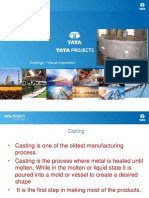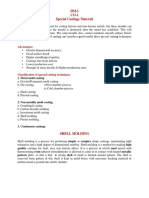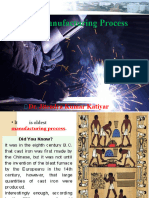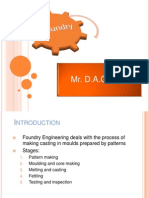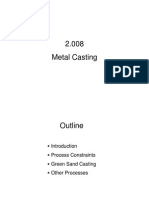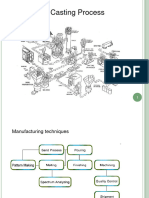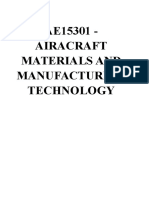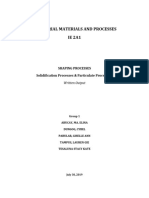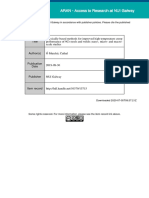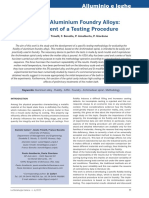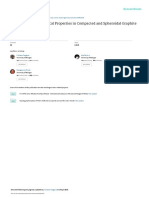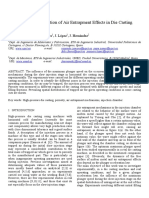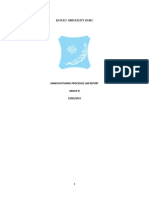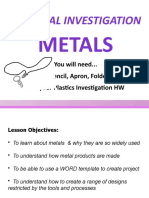0% found this document useful (0 votes)
58 views41 pagesCasting Techniques Overview
The document discusses various casting methods including sand casting, shell moulding, ceramic moulding, investment casting, lost foam casting, die casting, gravity die casting, and centrifugal casting. It provides overviews of the processes, details on patterns, molds, advantages, and disadvantages.
Uploaded by
Bassel AlshamiCopyright
© © All Rights Reserved
We take content rights seriously. If you suspect this is your content, claim it here.
Available Formats
Download as PDF, TXT or read online on Scribd
0% found this document useful (0 votes)
58 views41 pagesCasting Techniques Overview
The document discusses various casting methods including sand casting, shell moulding, ceramic moulding, investment casting, lost foam casting, die casting, gravity die casting, and centrifugal casting. It provides overviews of the processes, details on patterns, molds, advantages, and disadvantages.
Uploaded by
Bassel AlshamiCopyright
© © All Rights Reserved
We take content rights seriously. If you suspect this is your content, claim it here.
Available Formats
Download as PDF, TXT or read online on Scribd
/ 41






